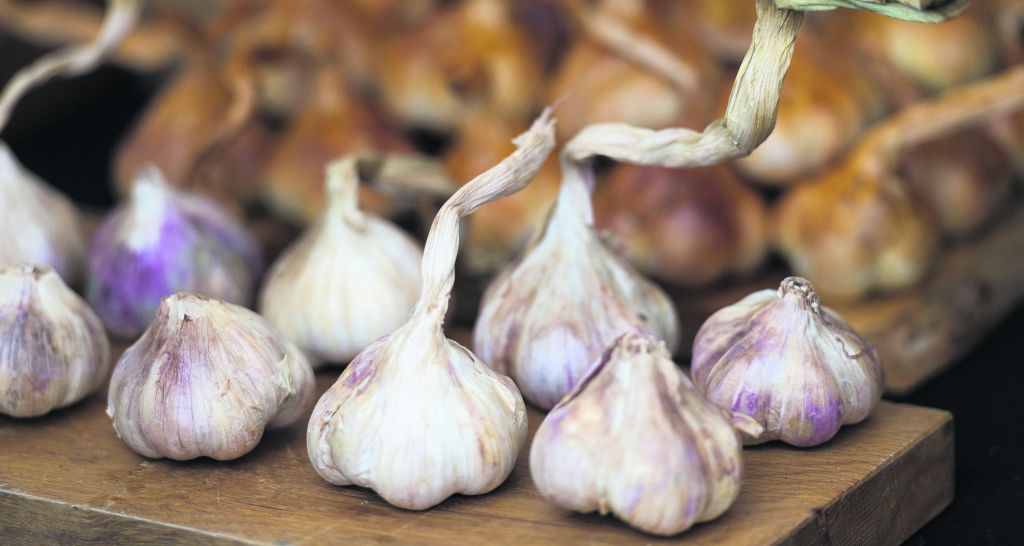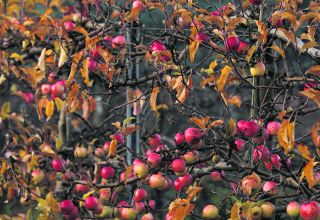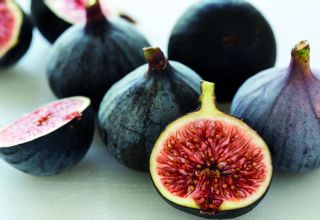Late autumn planting is the secret to get the best of a garlic crop which will have a head start when the weather warms up in spring.
Autumn-to-spring is the best season for growing garlic.
Garlic cloves planted in the autumn quickly develop roots, so the plants are established when cold weather stops their growth. Then they start growing again as the soil warms in early spring and produce a harvestable crop by the middle of summer. Cloves also can be planted first thing in spring but yields of spring-planted garlic can be half of that from cloves planted in the autumn.
Plant two or more different varieties
Part of the fun of growing garlic is trying new varieties. The main thing is to diversify, so that if one variety has trouble, another can take up the slack.
‘Music’ and ‘Bogatyr’, produce the largest, prettiest bulbs, with ‘Polish Softneck’ the leader among softneck types. ‘Music’ and ‘Polish Softneck’ also have done well in trials. A 2013 trial evaluated a different list of garlic varieties, of which ‘Chesnock Red’ was the top hardneck,
While this is a nice list of garlic varieties for many gardeners, bigger is not always better when you are growing garlic to store through winter and well into spring.
Plant large single cloves
Large cloves provide abundant food reserves for growing garlic seedlings, so the large outer cloves are the best ones for planting. But there is a catch. Often very large cloves are on the verge of dividing into two, and once planted the double cloves grow into tightly spaced twin plants that produce lopsided bulbs. Be choosy when deciding which cloves to plant, and bypass little cloves as well as big doubles.
Mulch through winter
Garlic competes poorly with weeds, and several studies have shown that mulching garlic through winter with straw or coarsely chopped leaves leads to bigger and better yields. Winter mulch helps keep nutrients in the soil from leaching away, and also can help buffer little plants from strong winds.
Prepare for pests and diseases
Many gardeners have no problems with pests when growing garlic, but two serious issues can sabotage crops. Onion white rot can be a persistent soil-borne disease, and onion root fly larvae can appear out of nowhere.
Onion root fly larvae are a worldwide pest of onions and garlic. Tiny beige worms found feeding in garlic bulbs are the larvae of a small fly, Delia antiqua. Three generations every summer is not uncommon in temperate climates, and some years are much worse than others. White sticky traps are preferred over other colours, and prime flight time is in the evening.
Garlic Q&A
Can I plant garlic I buy from the supermarket?
It isn’t worth the effort and rarely achieves decent results They often carry diseases or be unsuitable for the British climate, so results may be disappointing.
Can you eat garlic that has sprouted?
Sprouted garlic is 100 percent safe to eat, but it has a distinctly different flavour. Besides maybe bad breath, there are no side effects to eating sprouted garlic. They may even have a health benefit, according to a recent study that found higher levels of antioxidants in older cloves.
How do you know when garlic goes bad?
Garlic bulbs in peak condition should have plump, firm cloves tightly covered by white or purplish papery husks. Don’t eat if you see shriveled cloves or browned husks, or if the cloves are soft when pressed.
Can I freeze garlic?
Garlic is versatile when it comes to freezing. You can freeze raw whole unpeeled bulbs, individual cloves (peeled or unpeeled), or chopped garlic.












